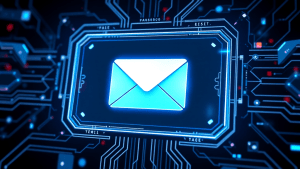How to secure your email and Stop junk email
Ensuring your secure email and learning how to prevent junk emails? Emails clutter your inbox and make finding important messages a challenge. But fear not; you can regain control! Start by using strong spam filters. These will help sort the wheat from the chaff. An effective tool in your arsenal is an email marketing software. It offers advanced filtering to keep spam at bay.
Additionally, consider a secure option like a private cloud provider. They offer robust solutions to protect your data. Partnering with a reputable tech partner program can also bolster your defenses. They provide cutting-edge resources to tackle spam and other threats. Ready to stop the junk? Let’s get started!

Understanding the Impact of Spam
Comprehending how spam affects your inbox is crucial for email safety. Overloaded inboxes lower productivity and increase security risks. A secure email system with robust filters can curb unwanted messages, ensuring your inbox stays tidy and efficient.
Implementing Strong Filters for Inbox Safety
Implement robust filters to bolster inbox safety. These tools, with personalized settings, shield your secure email from unwanted clutter. They can learn to spot spam patterns, keeping your inbox as fresh as a daisy.
Customizing Filter Settings for Effectiveness
Tuning your filters can boost your secure email effectiveness. Adjust these settings to pinpoint spam patterns and keywords. This precision keeps your inbox clean and protected from unwanted intrusions, ensuring your email stays as secure as Fort Knox.
Choosing a Private Cloud Provider
In the quest for secure email, selecting a cloud provider with a strong focus on security is key. Opt for solutions with robust protection against spam and cyber threats, ensuring your data remains safe.
Benefits of Cloud-Based Security Solutions
Cloud-based options offer a safe haven for secure email management. With top-notch security protocols, they shield against spam and cyber threats while providing scalability. This ensures your data remains protected, and your inbox stays clutter-free.

Identifying Phishing Attempts and Scams
Spotting phishing and scams is crucial for maintaining a secure email. Keep an eye out for suspicious emails with unexpected requests or attachments. Training boosts awareness, safeguarding against these digital traps.
Recognizing Common Red Flags
Spotting warning signals in emails is critical for ensuring a secure email environment. Be wary of unexpected attachments, unusual requests, or emails from unknown senders. Trust your instincts—if something feels off, it’s probably best to delete.
Managing Email Subscriptions Wisely
Effectively organizing email subscriptions can be like managing a virtual garden. Regularly prune unnecessary subscriptions to keep your inbox tidy. Use a secure email platform to protect your information while still enjoying the benefits of newsletters you value.
Techniques to Avoid Unwanted Lists
To steer clear of unwanted lists, frequently check and adjust your subscriptions. This way, you maintain inbox control. Embrace these practices to keep your email secure and spam-free, ensuring a clutter-free digital life.

Regularly Updating Email Passwords
Switching up your email password can be a game-changer for maintaining a secure email. Regular updates prevent unauthorized access and enhance security. Strong password combines letters, numbers, and symbols, making it harder for hackers to crack.
Monitoring Security Threats Proactively
Proactively keeping an eye on security threats helps maintain a secure email environment. Employing real-time monitoring tools can effectively identify suspicious activities, allowing swift responses to potential breaches before they escalate into significant problems.
Best Practices for Strong Passwords
Crafting a strong password is crucial for maintaining a secure email. Mix letters, numbers, and symbols to create unique codes. Update them regularly to thwart cyber threats. Avoid obvious choices like birthdays or simple sequences.
Also Read: Secure Email Hosting: Alternatives to ProtonMail
